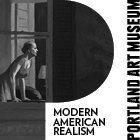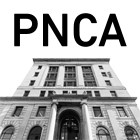
|
||
|
Portland art blog + news + exhibition reviews + galleries + contemporary northwest art
|
||
Substantial Links The Walker Art Center was nice enough to publish Alexander Blauvelt's catalog essay for their Hippie Modernism exhibition titled Aesthetic Radicalism. It brings up a number of good points though I think the dichotomy he makes between minimalism/formalism and psychedelic art are an unsustainable argument. For example, Smithson was obsessed with Judd's crystaline fragmentation and Judd's own love of John Wesley and Claes Oldenburg's work undermines his argument's premise. He is right in that the art market, most historians and museums did separate them. Hopefully, this exhibition will help break down some of the very bad art history done on so called minimalism the 1960's and 70's. This is the sort of design/art aesthetic/societal movement show we should see in Portland more often too... I curated this show last year.
Artinfo asks if can single venue galleries survive? Good question... answer of course is no. Gallerists must mix and show outside their brick and mortar spaces, art fairs are crucial but oversaturated so choosing the right one or two matters tremendously. The real question is how do you develop a brand and following? Certainly, off site exhibitions and some fairs are a good idea. It is a question of exposure. There is also the question of the kind of art that is easy to share on Instagram and that which is next to impossible to share. Those two modalities are more valuable today but the stuff that falls in between gets hit by the bus that is today's art consumers who either want the very quick or the very slow experience. Hyperallergic tears painter Josh Smith a new one... not completely underevedly either but it is wrongheaded because Smith is working on something interesting... weakened painting till it is potential sculpture. Still, this sort of review is a kind of honor and they did see merit in a few works. Overall, it isn't a linear thinking dismissal of the work, simply one that matches expectations to what is presented. I think the work isn't terrible but it does remind me why I love Cy Twombly... that's the real takeaway. The work feels like it isn't well rooted, trading pot ashes for trees as it were. The value isn't that the review is necessarily correct but in that his next exhibition and new bodies of work might correct or further heighten this rootlessness in his work so it achieves something stronger. That's why negative reviews are so important, it also means the critic thinks the artist can take it. It is in a way a character test for the artist, gallery, collectors and institutions. If you have character you don't mind having it challenged a bit. Jen Graves' piece on Paul Allen is a must read but it suffers from the general anxiety Seattle always seems to have over its major art patrons. LA has the same problem with Eli Broad but Allen is special because he's a tech guy. One reason the tech and art world's rarely intersect is tech people like to geek out on very particular details. To art people who by and large follow trends established in the art world this search for obscure/disruptive new trends to create a pet project seems impulsive or capricious but it isn't. Tech people have an edge and for whatever reason most of the art world doesn't have something similar because they do a lot of navel gazing (they follow a particular gallery or style of art and look at CV's first). So, dPaul Allen doesn't surprise me at all. Dealing with foundations and large non profits tends to create situations where things become predictable and dull, it is the way patrons are groomed. Museums and other major non profits are in flux but have always placed too much emphasis on predictable funding sources, which in turn makes them predictable programmatically (understandable but often dull). I've always found that idiomatic individuals... and their whims are what keep cultures reinvigorated. Conversely, most major museums would take a check half as large if they could count on it for 5-10 years in a row. From a museum director standpoint that makes sense but doesn't generate the inspired chaos that being a little more hungry can. It forces one to reach for more than had been considered before. I'm very curios how Allen's Pivot program will play out as well... very little of the art world actually considers how the mind works and putting art and science in such close proximity might be what the art world needs. Maybe it is because I'm a longstanding tech guy myself that loves guitars, sci-fi, art and science too... but I can see why Allen wants to periodically try a new way of interfacing with the public he's still young enough to be looking for the best way for his money and interests to have an effect. He's clearly working on it, and that is a very good thing... it seems personal, not the "just cut a check" way that a lot of patrons participate. Maybe it is the historian in me that can see past the money... remember MoMA, the Menil, the Guggenheim all started essentially from the seemingly capricious and very idiomatic interests of their founding patrons. Last but not least Brian Libby applauds the city council's decision to renovate the historic Portland Building. The trick will be to get the right architect as most harbor a deep seeded antipathy towards postmodern architecture. Renovations are challenging and they should preserve the way the elevators look as well as the crazy columned indoor gallery devoted to the Portlandia sculpture atop the building. I'd also design a better more inviting space for RACC's highly successful art gallery in the building. Most everything else floorplan-wise can be rethought and a few light wells + modern mechanicals will greatly improve the building, which will need to be essentially gutted and rebuilt. Posted by Jeff Jahn on October 27, 2015 at 10:36 | Comments (0) Comments Post a comment Thanks for signing in, . Now you can comment. (sign out)
(If you haven't left a comment here before, you may need to be approved by
the site owner before your comment will appear. Until then, it won't appear
on the entry. Thanks for waiting.)
|
| s p o n s o r s |
 |
 |
 |
 |
 |
 |
 |
 |
 |
 |
 |
 |
 |
 |
 |
 |

|
Site Design: Jennifer Armbrust | • | Site Development: Philippe Blanc & Katherine Bovee | |

